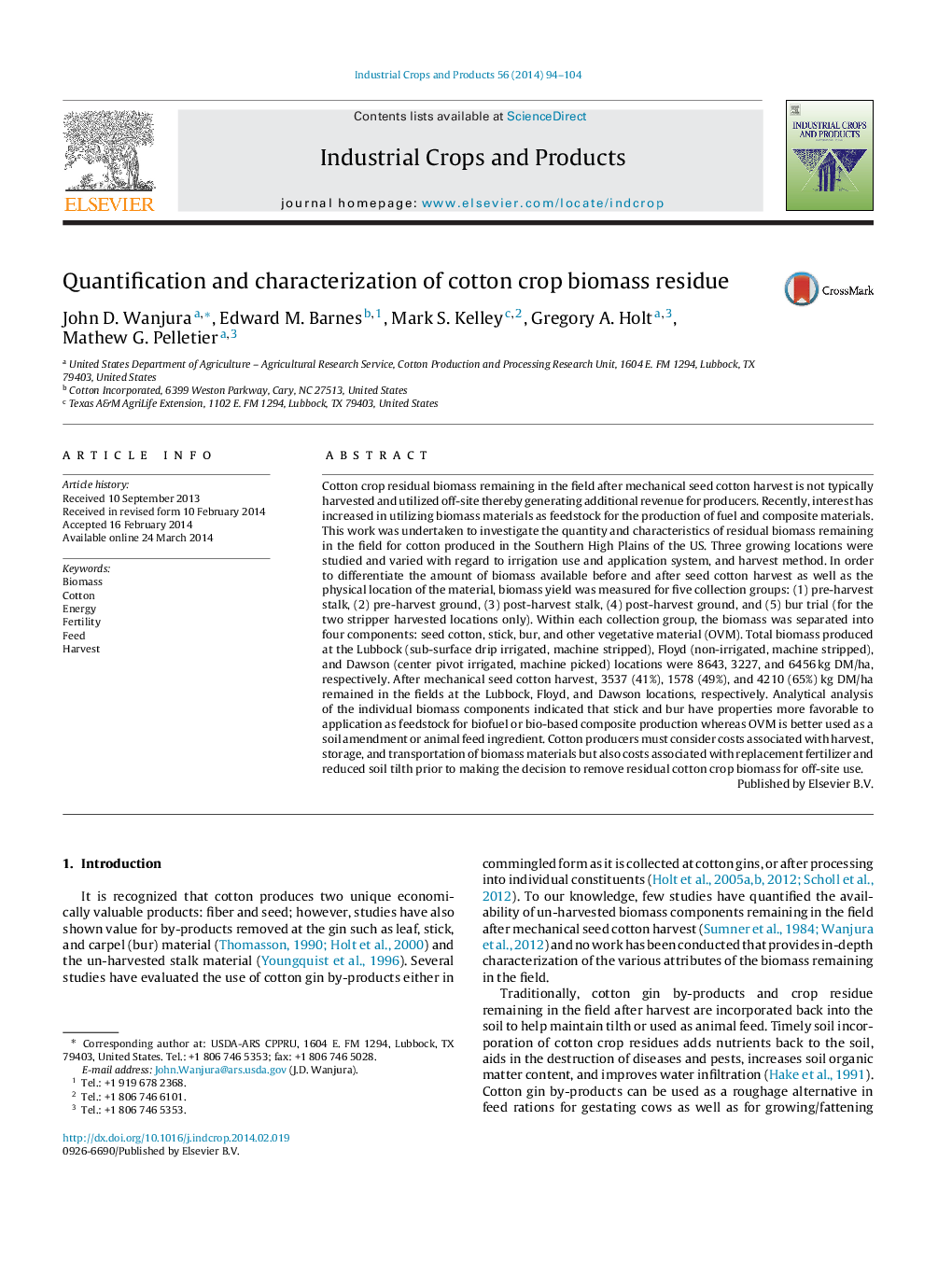| کد مقاله | کد نشریه | سال انتشار | مقاله انگلیسی | نسخه تمام متن |
|---|---|---|---|---|
| 4513305 | 1624853 | 2014 | 11 صفحه PDF | دانلود رایگان |
عنوان انگلیسی مقاله ISI
Quantification and characterization of cotton crop biomass residue
ترجمه فارسی عنوان
تعیین و تعیین ضایعات زیست توده محصول پنبه
دانلود مقاله + سفارش ترجمه
دانلود مقاله ISI انگلیسی
رایگان برای ایرانیان
کلمات کلیدی
زیست توده، پنبه، انرژی، باروری، خوراک، محصول،
موضوعات مرتبط
علوم زیستی و بیوفناوری
علوم کشاورزی و بیولوژیک
علوم زراعت و اصلاح نباتات
چکیده انگلیسی
Cotton crop residual biomass remaining in the field after mechanical seed cotton harvest is not typically harvested and utilized off-site thereby generating additional revenue for producers. Recently, interest has increased in utilizing biomass materials as feedstock for the production of fuel and composite materials. This work was undertaken to investigate the quantity and characteristics of residual biomass remaining in the field for cotton produced in the Southern High Plains of the US. Three growing locations were studied and varied with regard to irrigation use and application system, and harvest method. In order to differentiate the amount of biomass available before and after seed cotton harvest as well as the physical location of the material, biomass yield was measured for five collection groups: (1) pre-harvest stalk, (2) pre-harvest ground, (3) post-harvest stalk, (4) post-harvest ground, and (5) bur trial (for the two stripper harvested locations only). Within each collection group, the biomass was separated into four components: seed cotton, stick, bur, and other vegetative material (OVM). Total biomass produced at the Lubbock (sub-surface drip irrigated, machine stripped), Floyd (non-irrigated, machine stripped), and Dawson (center pivot irrigated, machine picked) locations were 8643, 3227, and 6456Â kg DM/ha, respectively. After mechanical seed cotton harvest, 3537 (41%), 1578 (49%), and 4210 (65%) kg DM/ha remained in the fields at the Lubbock, Floyd, and Dawson locations, respectively. Analytical analysis of the individual biomass components indicated that stick and bur have properties more favorable to application as feedstock for biofuel or bio-based composite production whereas OVM is better used as a soil amendment or animal feed ingredient. Cotton producers must consider costs associated with harvest, storage, and transportation of biomass materials but also costs associated with replacement fertilizer and reduced soil tilth prior to making the decision to remove residual cotton crop biomass for off-site use.
ناشر
Database: Elsevier - ScienceDirect (ساینس دایرکت)
Journal: Industrial Crops and Products - Volume 56, May 2014, Pages 94-104
Journal: Industrial Crops and Products - Volume 56, May 2014, Pages 94-104
نویسندگان
John D. Wanjura, Edward M. Barnes, Mark S. Kelley, Gregory A. Holt, Mathew G. Pelletier,
